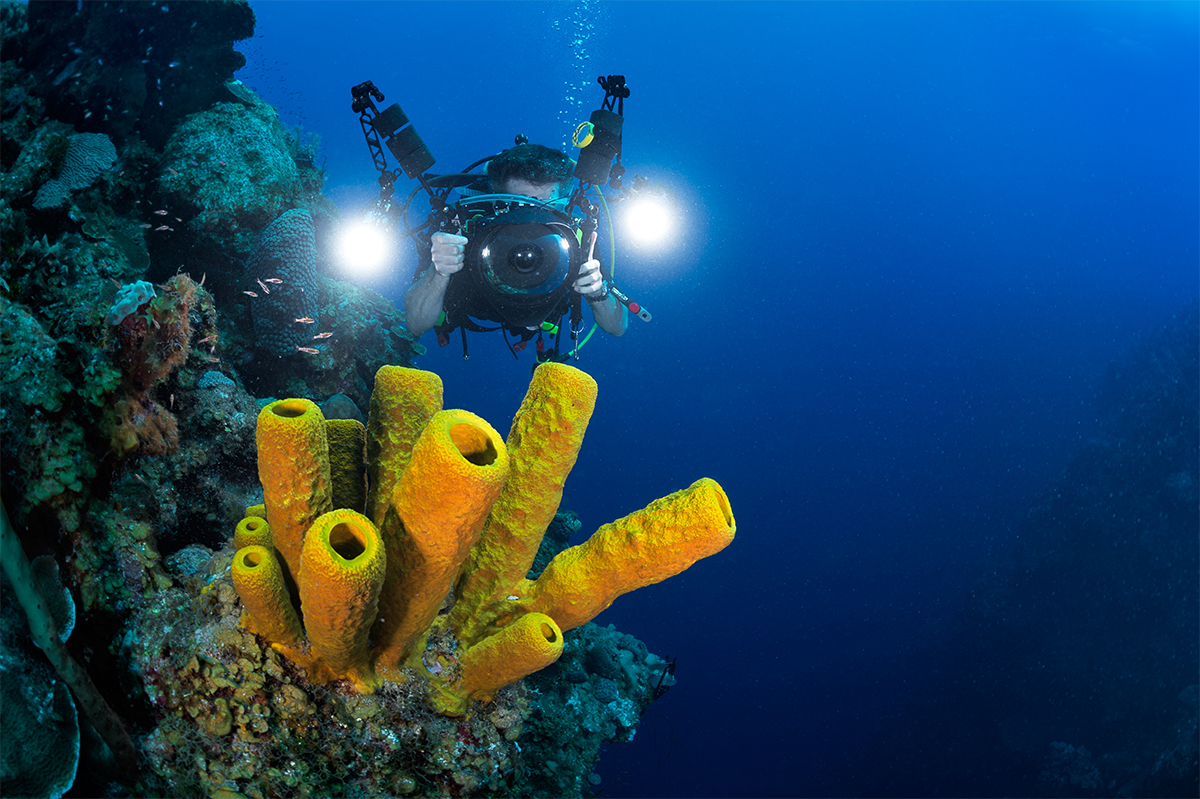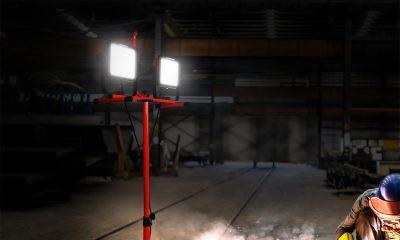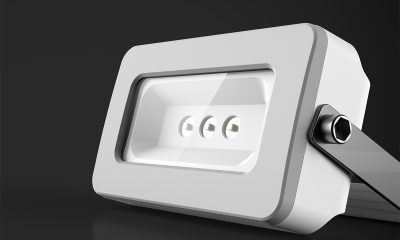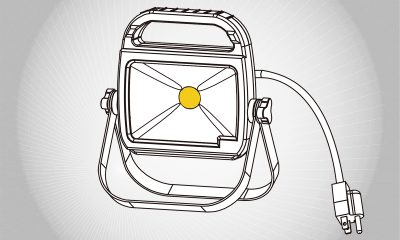Uncover marine wonders
An underwater video light is a watertight floodlight used underwater to provide illumination for still photography, videography and cinematography. It illuminates in the direction of where the camera is shooting and produces a specially engineered spectrum of light suitable for the underwater environment at an intensity level that will permit proper exposure. Underwater video lights are not the typical key lights in a three-point lighting setup that is used to fully model the subject’s features in photographic and videographic productions at sea and on land. They are often the sole source of illumination relied upon by a camera to bring out details and colors of marine wonders.
The complexity of underwater video lighting goes far beyond addressing the common requirement of providing enough light on the subject. The submarine lighting equipment must be made to withstand the water pressure at deeper depths and to overcome the challenge that the depth of the water can affect both the spectrum and intensity of light.
Light source
Single-source photographic, videographic and cinematographic lighting requires the underwater luminaires to produce a generous amount of illuminance that are uniformly distributed across a large area, whereas a scuba dive light that is used to navigate a night, wreck or cavern dive typically produces a focused spot beam that can throw bright light a long distance.
The flood beam of an underwater video light is produced using an array of mid-power SMD LEDs or a chip-on-board (COB) package. An SMD floodlight typically comes with a large light emitting surface (LES) which is great for wide area illumination. A COB floodlight has a smaller LES but can still produce high uniformity light over a large area. In the COB package, a high density array of LED chips are mounted onto a metal-core printed circuit board (MCPCB) or a ceramic substrate, which effectively reduces the thermal resistance of the semiconductor package and allows for high flux density operation with excellent beam uniformity.
The weight of water is cumulative; the deeper the water, the higher the hydrostatic pressure that affects a luminaire from all sides equally. Since the LES of an SMD floodlight can account for a large surface area on which the water can exert pressure, in deep water applications the SMD floodlight is not a good option. COB lights are smaller in size and therefore have better depths ratings. These lights are often used in pairs to increase illuminance coverage and optimize light distribution.
Color quality
Underwater video lights produce a couple of hundred lumens to several thousand lumens of white light. The correlated color temperature (CCT) of the light source is usually 5600K or so, which has been the standard CCT for the photographic, videographic and cinematographic industries. A high color temperature also denotes higher blue content in the spectral composition. This allows the beam to travel a distance much longer than warm white light. The spectral power distribution (SPD) of the light source is engineered to deliver radiant power fairly broadly across the visible spectrum in order to capture the beauty of the undersea world with high color fidelity lighting. For professional video shooting applications, the color rendering ability of the LEDs should take both their color rendering index (CRI) and television lighting consistency index (TLCI) into consideration.
Drive current regulation
The LED module is operated by constant current LED driver which regulates power supplied by the battery system and feeds the LEDs with an appropriate forward voltage and drive current. Many LEDs drivers allow dimming of the connected LEDs and execute control input from a microcontroller (MCU) for various modes of light output, e.g., high power, medium power, low power and strobe. A push-button, slide or rotary switching mechanism is used to send a command to the microcontroller.
Battery integration
LED underwater video lights are commonly integrated luminaires that have a self-housed battery system. The adoption of LED technology and lithium battery chemistry makes it unnecessary to house the batteries in an external canister which is originally designed to store a sufficient amount of energy for the power-hungry legacy light sources. An integrated battery compartment can accommodate small-sized but high-capacity lithium batteries that provide adequate reserve power for the high efficacy LEDs.
Durability and ingress protection
The LED module, driver and control circuitry and batteries are enveloped in a rugged, corrosion resistant aluminum housing which provides strength and durability to protect against hydrostatic pressure and the harshness of seawater while providing heat dissipation to keep the LED junction temperature within a safe limit. The luminaire is hermetically sealed to resist water ingress.












Loading...